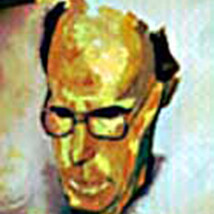Bioerosion and Paleobathymetry: Results
Start • Research group • What are microborings? • Microborings & Paleobathymetry • Results • Publications
| Members of the Frankfurt research team investigated the taxonomy and paleobathymetry of microborings in many sedimentary basins of different periods (see following pictures). |
 |
| Distribution of microendoliths in some Permian and Triassic reefs (Balog 1996). |
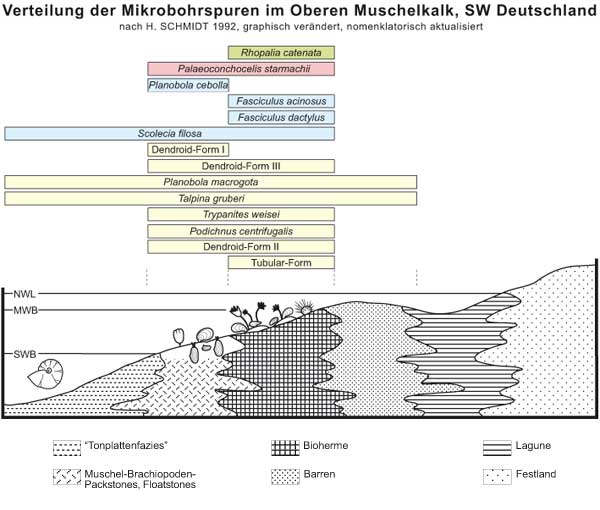 |
| Distribution of microendoliths in different facies of the SW-German Muschelkalk (H. Schmidt 1993). |
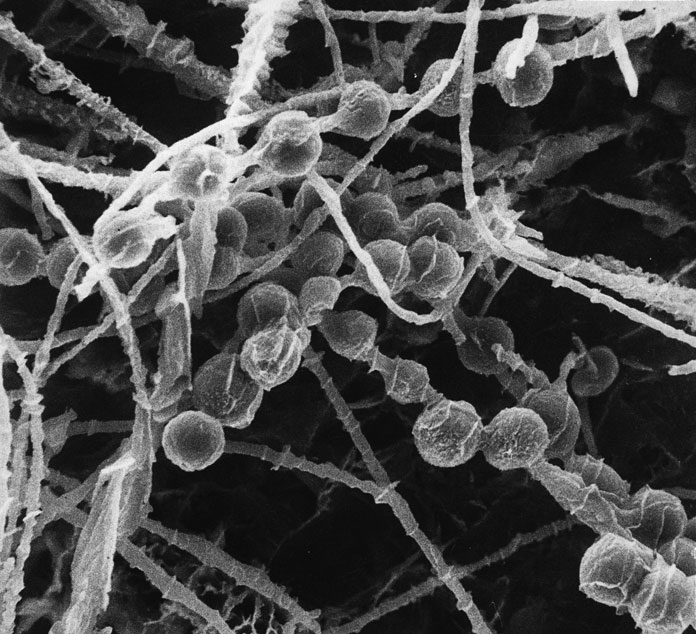 |
| Palaeoconchocelis starmarchii in a Jurassic Pygope/brachiopod (Glaub 1994). Frame size: 150x150 µm. |
 |
| In the Upper Cretaceous chalk of Northern Germany different dendritic microendoliths similar to this one are abundant (Hofmann 1996). |
 |
|
An Eocene boring system (Polyactina araneola) with a fungus (Conchyliastrum) as presumed producer (Radtke 1991). |
|
|
| Growth of reefs of different geological ages in shallower or deeper water as reconstructed by their inventory of microendoliths (Vogel et al. 1999). |
| In 1991, we extended our research to modern environments (bathymetry and quantification of bioerosion), see following pictures. |
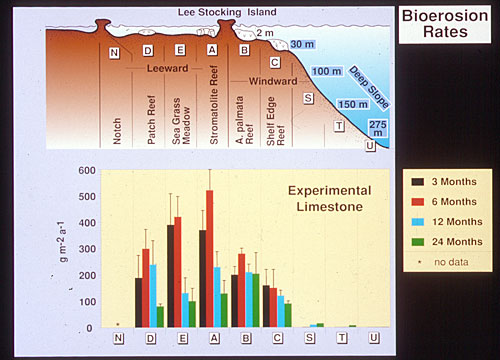 |
| Bioerosion rates of microborers in experimental substrates at Lee Stocking Island, Bahamas (Vogel et al. 2000). |
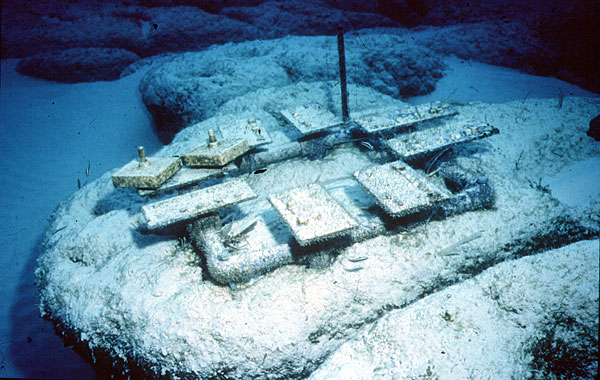 |
| One of our frames with tablets carrying experimental substrates planted on a stromatolite reef at Lee Stocking Island, Bahamas. |
 |
| One of the patch reefs in the lagoon of One Tree Island, Great Barrier Reef, which was used for nutrient experiments (Kiene 1997, Vogel et al. 2000). |
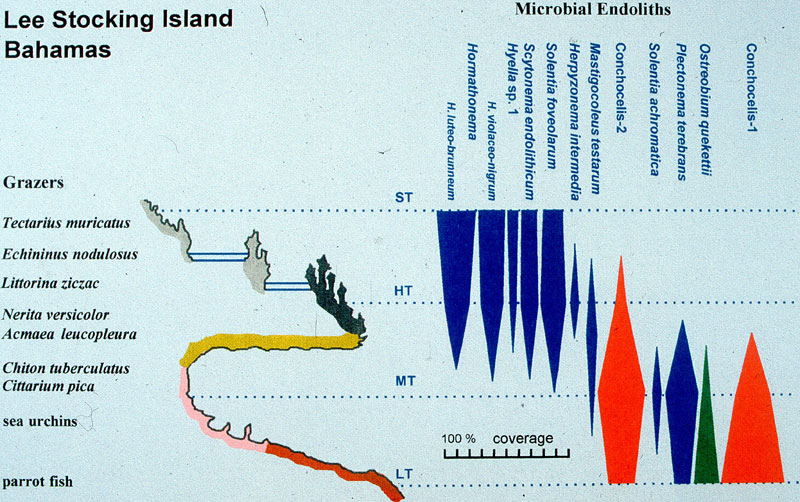 |
| Distribution of microendoliths in the bioerosional "notch" along tropical limestone coasts (Radtke et al. 1996). |
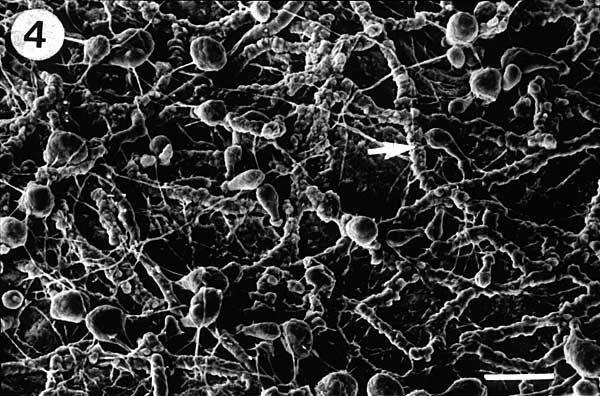 |
|
Bioerosion by microendoliths in the deep water coral Lophelia (N Norway) (Krutschinna 1997). Arrow: "Tubulare Spur". Earlier publications relate to tropical and subtropical realms. Presently we investigated the influence of low (non-tropical) temperature, high latitude position at Recent sites (North Atlantic, Krutschinna 1997, Vogel et al. 1999, Glaub et al. 2002, Glaub 2004) and in fossil strata (Tertiary of Alaska, Vogel & Marincovich 2004). Additionally we started analyzing the impact of low salinity in the Neogene of the Vienna Basin (Austria) (Vogel, Radtke). K. Vogel and C. Brett (Cincinnati, Ohio/USA) investigated the first appearance of important microendoliths and the evolution of bathymetrically interesting microendolithic ichnocommunities in the Ordovician of Ohio and Kentucky (Vogel & Brett 2009). I. Glaub´s research concentrates on endolithic micro-organisms in the Tertiary of Australia. |
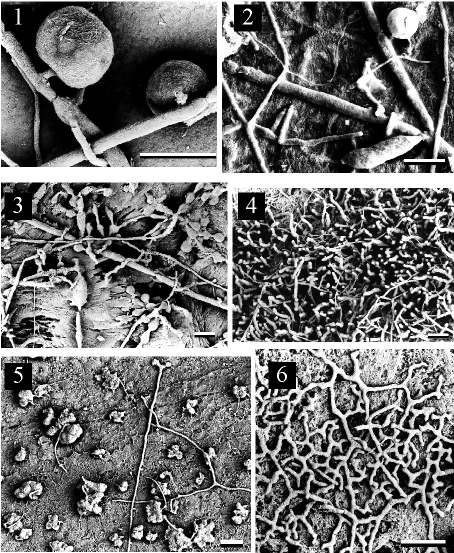 |
| Microendolithic ichnospecies in Tertiary cold water sediments of Alaska (Vogel & Marincovich 2004). |
 |
| Position of photic and aphotic zones at some localities of the N-Atlantic resulting from the microendolith ichnocoenoses observed in mollusc shells and balanid skeletons at these places (Glaub et al. 2002). |
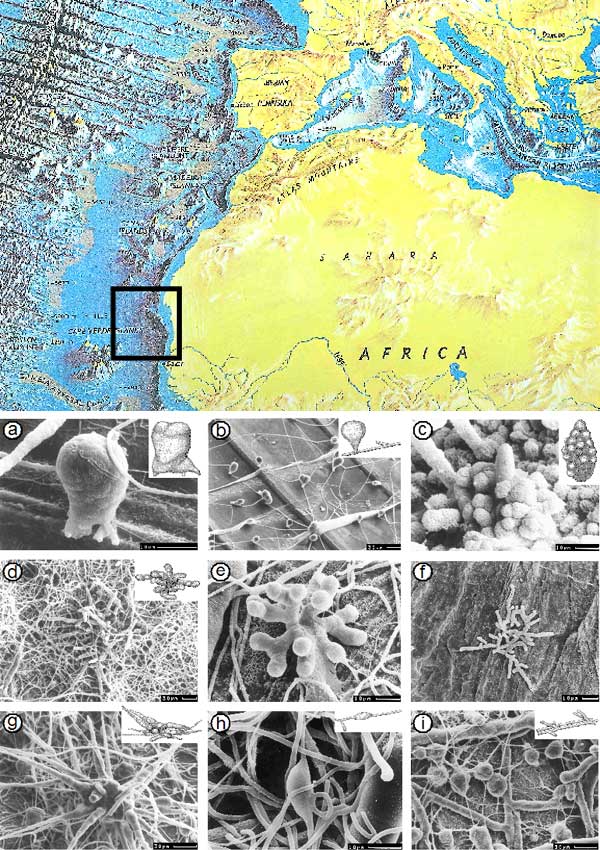 |
| Some ichnotaxa from recent and sub-recent shells off Mauritania (West Africa), Glaub 2004. |
 |
Start • Research group • What are microborings? • Microborings & Paleobathymetry • Results • Publications





